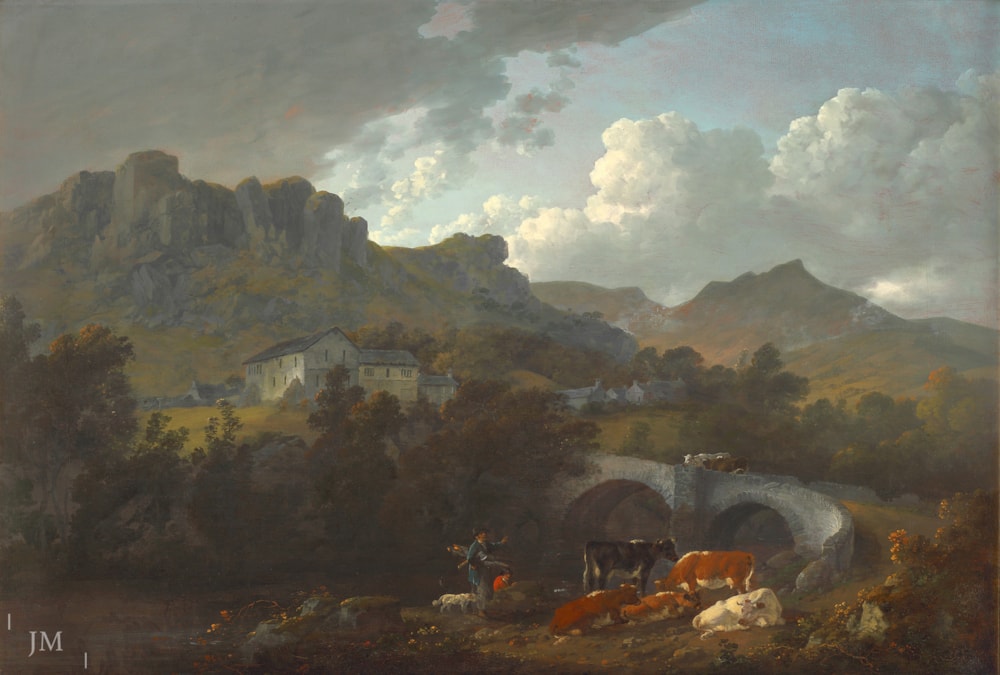Julius Caesar Ibbetson ( 1759 - 1817 )
A View of Clappersgate, near Ambleside


A View of Clappersgate, near Ambleside
oil on canvas
23 1/4 x 34 1/4 ins. (59 x 87 cm.)
signed and dated J.Ibbetson 181(2?)
More than a decade after moving away, Ibbetson here depicts accurately, and fondly, the hamlet called Willy’s Hill at Clappergsate, where he spent two of the happiest years of his life, from 1800 to June 1802. Looming above the settlement is the dramatic fell called Loughrigg, while in the foreground is the bridge over the River Brathay which is still there today, and which was painted in 1805 by Philippe-Jacques de Loutherbourg, the French-born Royal Academician whose work Ibbetson clearly knew and admired. In the Ferens Art Gallery, Hull, there is Ibbetson’s painting of the actual house, built in 1677, and in our picture it is almost certainly to be found among the cluster of cottages away on the right, where the path leads away and up over the hills. It was here that he first lived with his new bride, Caroline, here that he wrote and published his instruction manual, Painting in Oil, and here that they received many visitors and admirers of his work. On 16th June 1800, Dorothy Wordsworth recorded in her diary that ‘WIlliam [her poet brother] and I went to Brathay by Little Langdale... We drank tea at Mr. Ibbetson’s.’
The exceptional, undisturbed condition of this large canvas is affirmed by the wisps of cloud lingering in the hills in the upper right and the crows wheeling among the rocks, a welcome indication that the paint surface throughout the picture has not been worn and abraded by harsh cleaning, and nor are the darker tones marred by the excessive cracking and opacity which has affected some of the artist’s work where he experimented with his ‘gumption’ as he called it, a kind of glaze which he concocted. The wonderful contrast between the warmer hues and the cooler greys and blues is very much in the manner of the Dutch Old Masters, whom he revered, and is, to my mind, what makes Ibbetson’s best work stand out. A very similar tonality and palette are to be found in his Buttermere Bridge and Church from the ‘Fish’ Inn, painted at almost the same time (1813) (Wordsworth Trust, Dove Cottage, GRMDC.A211) Note, too, his trademark prussian blue on the coat of the man with an axe and firewood, balanced by the vivid dab of red of his companion which Ibbetson habitually used to draw in the viewer’s eye. Above and beyond the contented cattle and scene of harmony by the river, the brooding outcrops are starkly backlit by the magnificent ‘Ruisdael’ sky. It is Ibbetson at his ‘sublime’ best.

